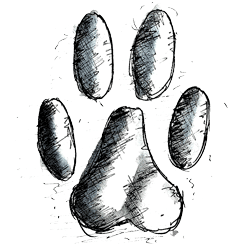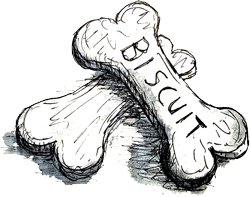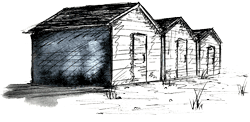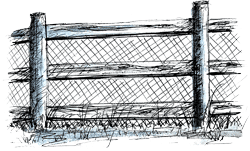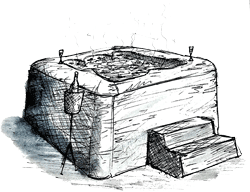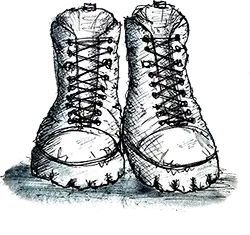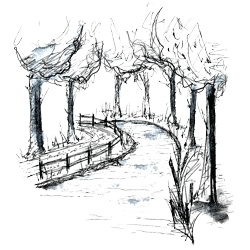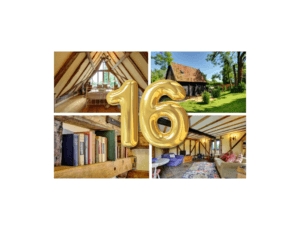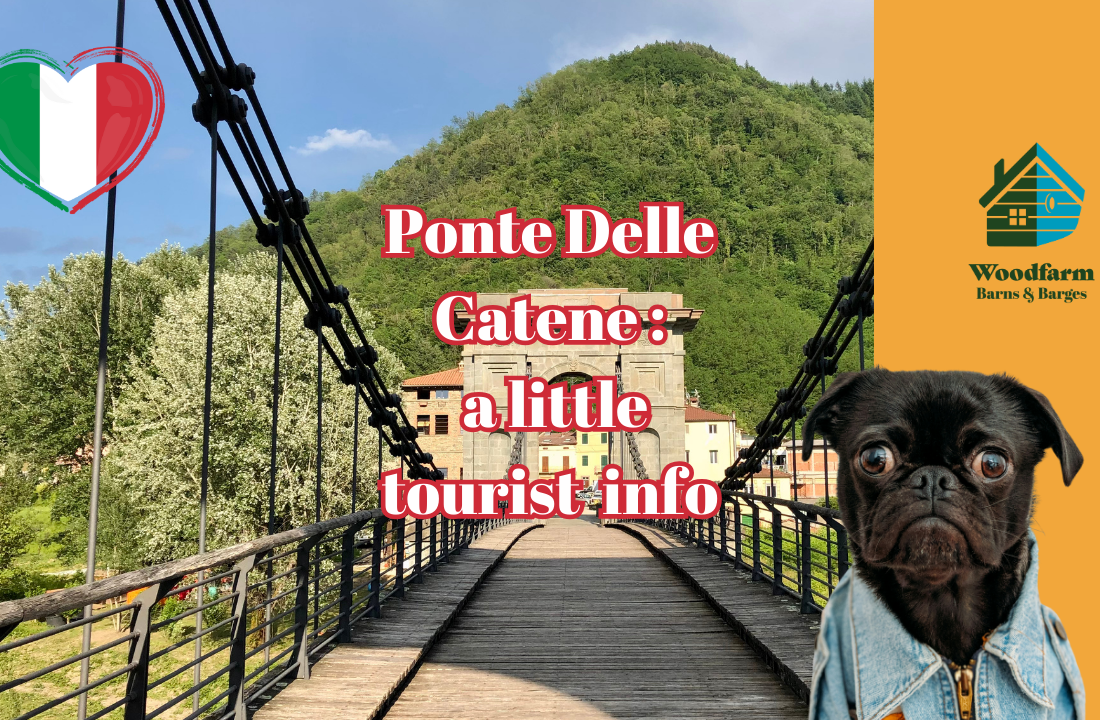
Ponte Delle Cantene: a little tourist info
By Carl Scott
This blog post introduces you to a video that I shot specifically for our place in Tuscany, to highlight Ponte Delle Cantene. It’s also part of our You Ask, We Answer series, where we answer tonnes of FAQs and give you lots of information to help you get the most out of your Tuscan stay with us.
At Woodfarm Barns & Barges, we understand that planning the perfect getaway involves many questions and uncertainties. To help you navigate through these and to ensure you have the best experience possible, we’ve launched our ‘You Ask, We Answer’ initiative. This approach isn’t just about promoting our Barns, Cottages and Barges; it’s about providing valuable information, solutions, and peace of mind to our prospective guests.
Anyway, this is the video, and the transcript is below it if you wish to go back over anything.
This is what I said…
Video Introduction to Ponte Delle Catene and Surrounding Area
Hello, it’s Carl, and in this video, I’m sharing all about Ponte Delle Catene. This is a stunning bridge, and I’ll show you more in detail in a moment. Located about 25 minutes from Casa Trebbio, it is just on the Lucca side of Bagni di Lucca.
This bridge is the first Italian bridge constructed with both wood and iron. Though it opened in 1953, work initially began in the 1800s but was delayed due to political issues. The most remarkable feature of this bridge is its suspension design, anchored firmly on one side of the river while allowing some movement on the other.
Exploring the Village of Chifenti
I’m starting this tour in the village of Chifenti, which is on the same side of the river as Casa Trebbio. This is also the route I take when heading to Bagni di Lucca. Chifenti is a charming little village, complete with a town square where you can find a few shops, bars, and a hardware store (where I bought the key safe for Casa Trebbio). Just behind this area is the River Lima, a tributary of the River Serchio, which flows all the way to Lucca and past the bottom of our road.
The Structure of the Bridge
As we move closer, you can see the impressive ironwork. On the Chifenti side, the bridge is anchored by massive iron chains that go into two large anchor points. These chains pass over a roller in the first arch and then under the bridge, allowing for some flexibility and movement.
Stunning Views from the Bridge
Now, let’s take a look at the stunning views. This section of the bridge was recently renovated, with new handrails added after the pandemic. Looking south, you can see the River Serchio as it heads towards Lucca. There’s a small waterfall in this direction, where kids can often be seen swimming during the summer. Kayaking is also a popular activity in the area, with a kayak hire place located nearby.
Turning north, the river leads toward Bagni di Lucca, which is just a mile or two away. On the opposite side of Chifenti is Fornoli, home to the moving parts of the bridge. Typical Tuscan houses overlook the river here, complete with laundry hanging from balconies.
A House with Renovation Potential
One of the most intriguing features is a little pink house by the river, which has been derelict for as long as I’ve known it. Despite its condition, it has incredible renovation potential with a small garden and a balcony overlooking the river. Imagine waking up to those views with a cup of coffee in hand – it’s absolute heaven, much like the view from Casa Trebbio.
Closing Remarks
That’s my introduction to Chifenti, Fornoli, and the Ponte Delle Catene. I hope you found it interesting! Please do subscribe to the YouTube Channel and our newsletter on the homepage of our website for updates on competitions, last-minute availability, and cancellations. Don’t forget to follow us on social media as well.
See you in the next video!
As promised, here is the transcript from the sign at the bridge so you can see the full history and construction details:
The Ponte delle Catene is the first Italian bridge built in wood and iron.
It was designed by the architect Lorenzo Nottolini to connect Chifenti to Fornoli. It was built in 1840 on behalf of Carlo Ludovico di Borbone, Duke of Lucca, after a previous bridge was destroyed when river Lima flooded in 1836.
The Duke sent Nottolini to England to study the suspension bridges system there, because he desired a state-of-the-art structure leading to Bagni di Lucca, a very fashionable spa at the time. The construction was stopped in 1847 when the Ducato di Lucca was annexed to Granducato di Toscana. It was ruined into the river.
But it was rebuilt according to the original design, with wide observation decks providing access to the runway in order to make it a community meeting point as well as a traversing bridge, and eventually it was opened up in 1953.
Two triumphal arches lodging 16 niches are located at both ends of the bridge. Its runway, once accessible to vehicles, is made out of wood.
The structure is founded on the innovative use of iron industry techniques at the time, through suspension chains stretched by means of a complex underground device. Its chains get into the holes in the arches, where there are rollers that pull them down into the stone pedestals located on the terraces and then go down till the underground level where they are anchored.
On the Chifenti side, its chains are anchored at pillars made out of stone and iron and one can see the anchorage system just covering the pedestal lid off.
On the Fornoli side, instead, there is an iron gate under the bridge at river level that allows the entrance into the crankcase where the device that keeps the chains in traction is. The main span of the chains support the plank through iron rods, called “Stralli”, each of them ending with an inverted anchor attached to the chains.
Each “Strallo” pierces a load-bearing beam and through an iron loop encircle and support the beam. The plank and the walking area are based on these load-bearing beams.
Today the bridge is provided with an iron and wood handrail, added after its restoration in 2003 by the intervention of Provincia di Lucca and with the help of the World Monument Fund American Express.

